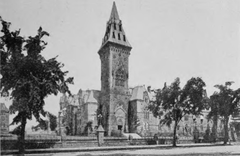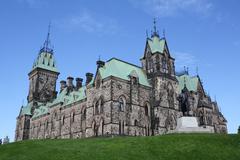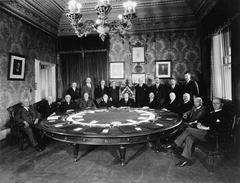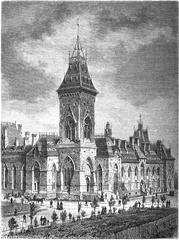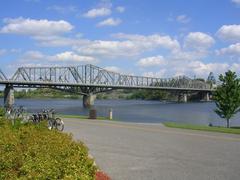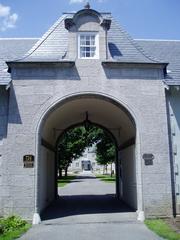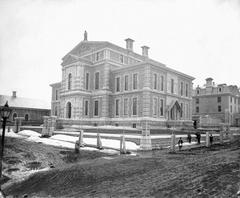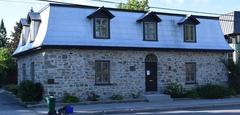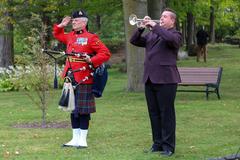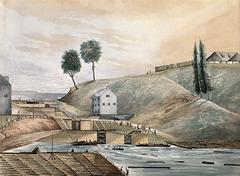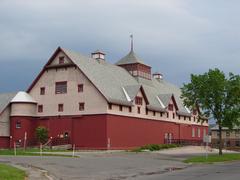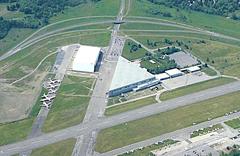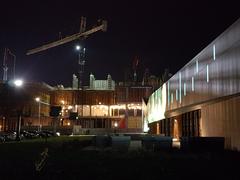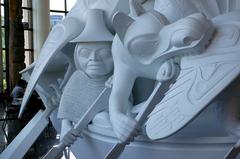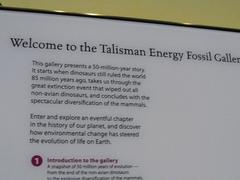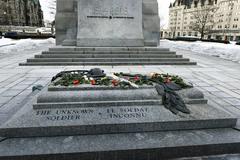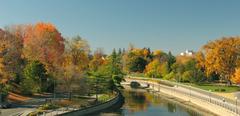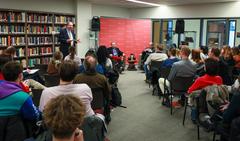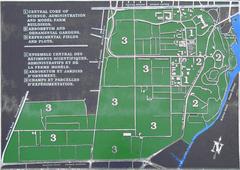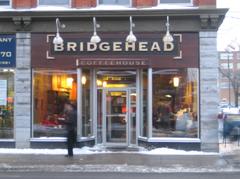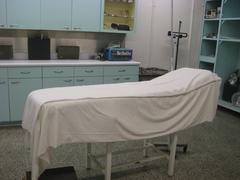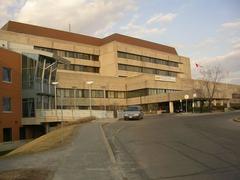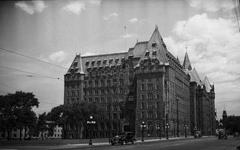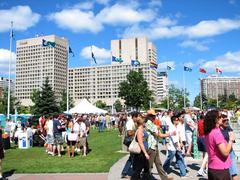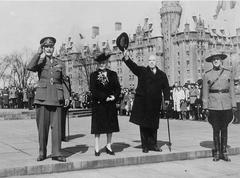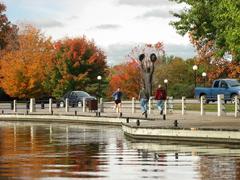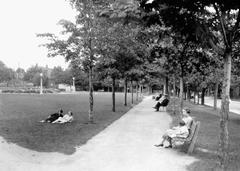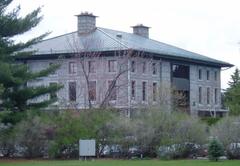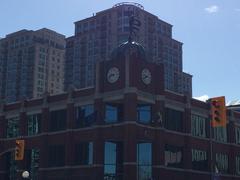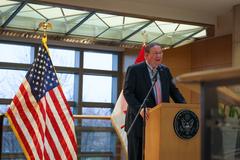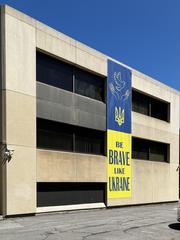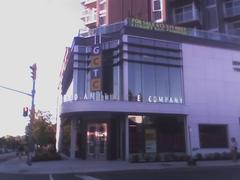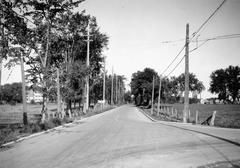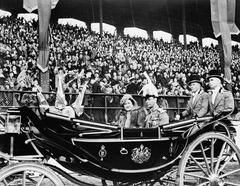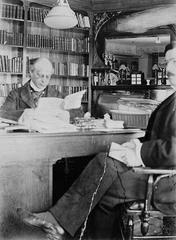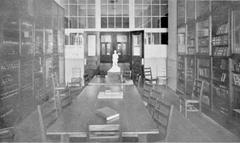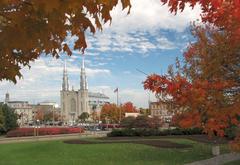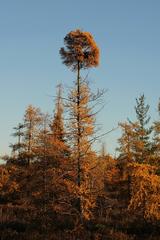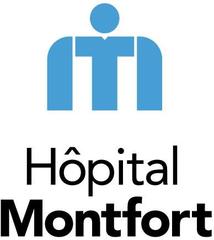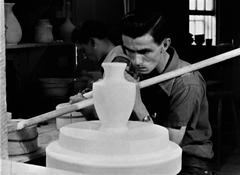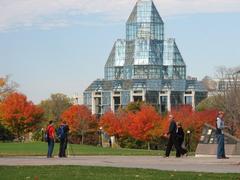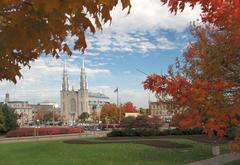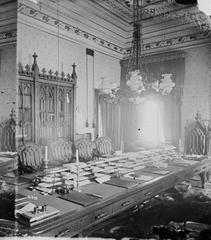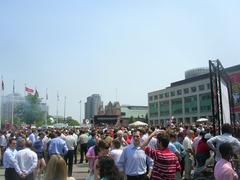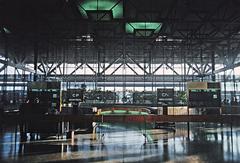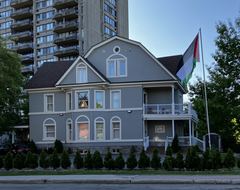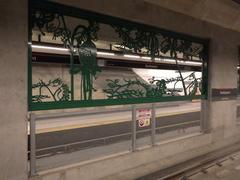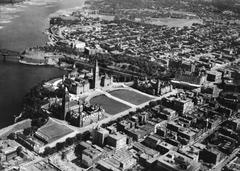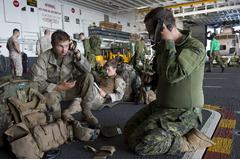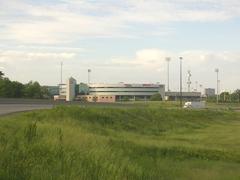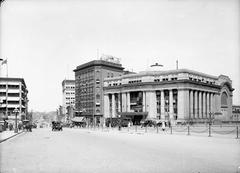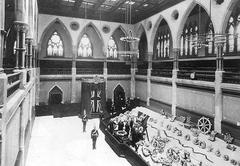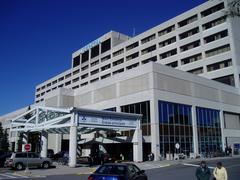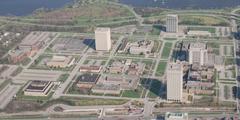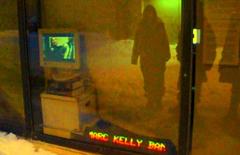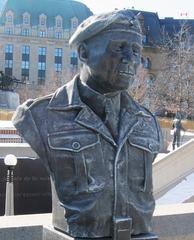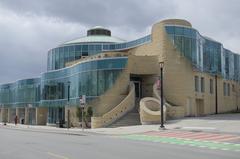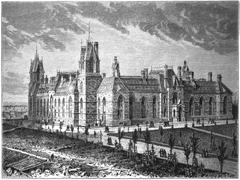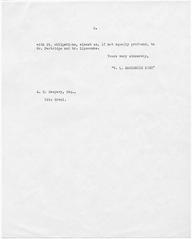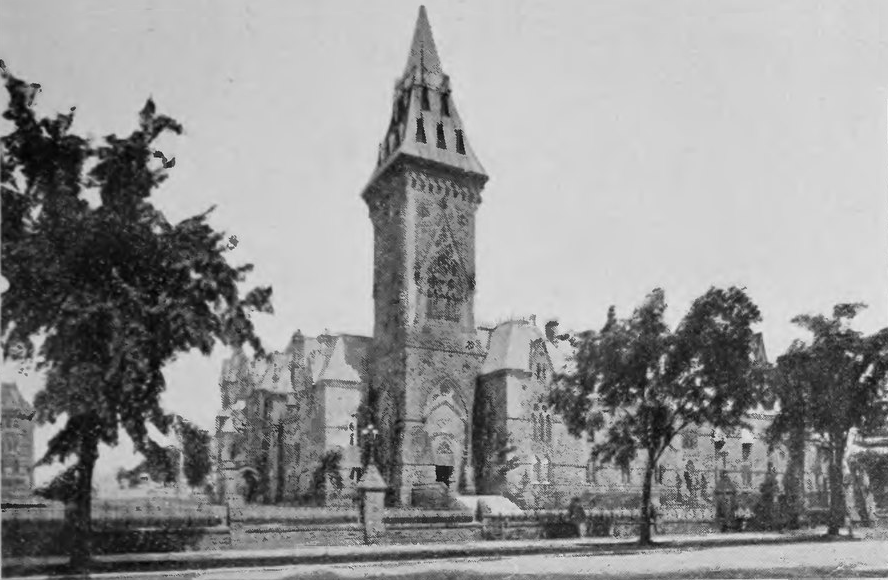
East Block Ottawa: The Complete Guide to Visiting Hours, Tickets, and Historical Highlights
Date: 14/06/2025
Introduction
The East Block stands as one of Ottawa’s—and Canada’s—most iconic historical landmarks. Prominently located on Parliament Hill, this Victorian High Gothic Revival building was constructed between 1859 and 1866 to house the offices of Canada’s earliest government leaders, including Sir John A. Macdonald. Today, the East Block offers visitors an immersive journey into the nation’s political and architectural heritage through seasonal tours, restored heritage rooms, and award-winning conservation projects. This comprehensive guide covers the East Block’s history, architectural significance, visiting hours, ticketing, accessibility, and practical tips to help you plan an unforgettable visit (Heritage Ottawa; Canada.ca).
Table of Contents
- Early Origins and Construction
- Architectural and Political Significance
- Role in Canadian Confederation
- Restoration and Preservation
- Architectural Features and Interior Highlights
- Symbolism and National Identity
- Recent Innovations: Lighting and Accessibility
- Planning Your Visit: Hours, Tickets, and Accessibility
- Guided Tours and Special Events
- Nearby Attractions and Travel Tips
- Visitor Etiquette, Safety, and FAQs
- Summary and Recommendations
- Sources
Early Origins and Construction (1859–1866)
After Queen Victoria designated Ottawa as the capital in 1857, the East Block was one of the first government buildings erected to serve the growing United Provinces of Canada. Designed by architects Thomas Stent and Augustus Laver, the building exemplifies the High Victorian Gothic Revival style, with its asymmetrical massing, Nepean sandstone façade, pointed arches, and ornate stonework (Heritage Ottawa; Parks Canada).
Architectural and Political Significance
The East Block’s Gothic Revival design was chosen to project grandeur, stability, and the democratic ideals of a young nation. Its pointed arches, turrets, and elaborate carvings were inspired by European parliamentary traditions and symbolized Canada’s ties to the British Empire (Icy Canada; Factbud). The building once housed offices for the Governor General, Prime Minister, and Privy Council. Nearly every Prime Minister from Sir John A. Macdonald to Pierre Trudeau worked here, and the Privy Council Chamber within saw the shaping of foundational legislation.
Role in Canadian Confederation
Completed just before Confederation in 1867, the East Block was central to the establishment of the Dominion of Canada, hosting cabinet meetings and Privy Council sessions. Its presence underscored the permanence and authority of Canada’s new federal government (Maple Voyage Diary).
Restoration and Preservation
By the mid-20th century, the East Block faced threats from modernization. Heritage advocates rallied to preserve its unique architectural features, succeeding in having it designated a Classified Federal Heritage Building in 1983. Extensive restoration in the late 1970s and early 1980s ensured the survival of its original Gothic elements, and the building remains one of Parliament Hill’s most intact historical structures (Heritage Ottawa; Parks Canada).
Architectural Features and Interior Highlights
The East Block is celebrated for its robust Nepean sandstone exterior, intricate stone carvings, copper roofs, and distinctive towers. Inside, several rooms are restored to their 19th-century appearance, including the offices of Sir John A. Macdonald and Sir George-Étienne Cartier, featuring original or reproduced woodwork, marble mantels, and period furnishings. The building was technologically advanced for its time, with early communication systems and innovative ventilation, though it was infamously difficult to heat and cool (Wikipedia).
A 1910 addition, built to accommodate expanding government needs, was designed to harmonize with the original structure while remaining architecturally distinct (Canada.ca).
Symbolism and National Identity
The East Block’s Gothic Revival style evokes the traditions of medieval European governance, reinforcing Canada’s democratic values and national identity. The building’s silhouette is a familiar symbol, featured in national ceremonies, commemorative currency, and celebrations (Wikipedia; Factbud).
Recent Innovations: Lighting and Accessibility
In 2024, a major exterior lighting project by Lightemotion and partners received the Award of Distinction at the IES Illumination Awards, enhancing the building’s visibility and highlighting its sculptural details at night (e-architect). The project uses energy-efficient technologies and careful placement to preserve the building’s historical integrity.
Recent renovations have also improved accessibility, with ramps and elevators making the East Block more inclusive for all visitors (RTS Parliament).
Planning Your Visit: Hours, Tickets, and Accessibility
Visiting Hours:
The East Block is open for guided tours from late June to early September (excluding July 1st/Canada Day), typically from 9:00 AM to 5:00 PM. Exact hours may vary—always check the official Parliament of Canada website before your visit.
Tickets:
Entry is free, but tickets are required for guided tours. Reserve tickets online or at the Visitor Welcome Centre at 90 Wellington Street. Same-day tickets are limited and first-come, first-served (visit-ottawa.ca).
Accessibility:
The building is wheelchair accessible, but some heritage constraints remain. Accessible parking and drop-off can be arranged; accessible washrooms are at the Visitor Welcome Centre. Contact the Centre in advance for special accommodations (canadawander.com).
Guided Tours and Special Events
Guided tours last about 50 minutes, featuring restored rooms, artifacts, and stories from Canada’s formative years. Tours are led by knowledgeable guides, and may include multimedia elements. Tours are available in English and French—specify your preference when booking (RTS Parliament). Special events, such as heritage festivals and Canada Day celebrations, often highlight the East Block.
Nearby Attractions and Travel Tips
- Other Parliament Buildings: Centre Block, West Block, Library of Parliament
- Museums: National Gallery of Canada, Canadian Museum of History
- Outdoor Sites: Rideau Canal, Confederation Square, Major’s Hill Park
- Transport: OC Transpo buses, O-Train, public parking nearby (advance reservations recommended)
Plan to arrive 5–10 minutes before your tour start time. There is no indoor waiting area at the East Block; be prepared for outdoor waits and mandatory security screening. Only one small bag (max 35.5 cm x 30.5 cm x 19 cm) per person is allowed. No food or drinks inside.
Visitor Etiquette, Safety, and FAQs
- Respect preserved areas: Do not touch artifacts or furnishings.
- Photography: Allowed without flash or tripods, in designated areas.
- Accessibility: Ramps and elevators provided; contact Visitor Centre for special needs.
- Tours: Best suited for visitors aged 8+; strollers permitted but must be empty.
- Languages: Tours in English and French.
Frequently Asked Questions
Q: When are tours available?
A: Late June to early September, 9:00 AM–5:00 PM, excluding July 1st. Check the official site for current details.
Q: How do I get tickets?
A: Reserve online or at the Visitor Welcome Centre. Same-day tickets are limited.
Q: Is the building accessible?
A: Yes, with ramps and elevators, though some areas may be challenging.
Q: Are tours free?
A: Yes, but tickets are required.
Q: Are tours available in both English and French?
A: Yes, specify your language preference when booking.
Summary and Recommendations
The East Block of Parliament Hill is not just an architectural marvel but a living symbol of Canada’s democratic heritage. Its role in the birth of Confederation, its remarkable Gothic Revival design, and its continuing use for parliamentary purposes make it an essential stop for anyone interested in Canadian history or civic architecture. Thanks to ongoing restoration and modernization—including accessibility upgrades and innovative exterior lighting—the East Block welcomes visitors of all backgrounds.
To make the most of your visit:
- Reserve tickets in advance, especially during peak summer months.
- Arrive early, pack light, and prepare for security screening.
- Explore nearby Ottawa attractions to enrich your experience.
- Download the Audiala app for guided tours and exclusive content.
Experience the East Block—a gateway to Canada’s political heritage and an inspiring testament to its enduring democracy.
Sources and Further Information
- Heritage Ottawa
- Canada.ca
- Maple Voyage Diary
- RTS Parliament
- Visit Ottawa
- e-architect
- Ottawa Tourism
- Parks Canada
- canadawander.com
- Wikipedia
- Factbud
- visit-ottawa.ca
- Canadian Museums
